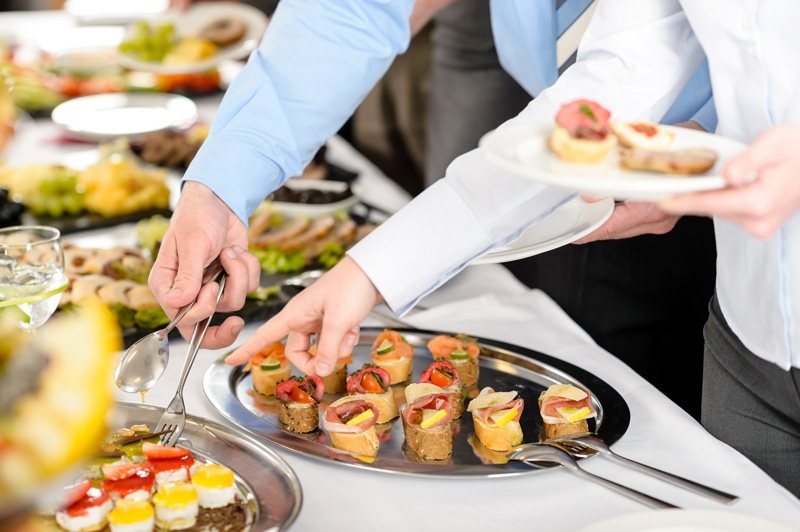If you are a more of a “budget-priced” caterer, I’m sure you’ve dreamed of upgrading your food and services to generate higher prices and profits. Or, maybe you are a luxury caterer who is frustrated with the clients who you lose because they cannot afford your services.

“You’re too expensive” or “I want more than what you offer” are frequent comments.
Of course, most of us offer pricing at various levels. In my firm, as a luxury caterer, we price our menus along the lines of the carmaker, BMW, with Series I, 3, 5, 7, and M menus that range from a low to high of approximately $100 per person.
Some of us have attempted to offer a lower-priced menu with little success. This can backfire when clients expect your luxury service and food, and receive good food and service, but not as they would if they had paid for luxury.
Conversely, lower-priced caterers have offered more luxury priced menus. The food might be great, but there’s a huge difference between luxury service staff and equipment and what you have usually offered.
If you’re like me, I’m relentless in trying to expand my revenues to new markets. However, I want to do it without tarnishing my luxury brand. And if you’re a lower-priced caterer, you might drool over the higher-end events that you simply cannot book. So what is the answer?
First, if it were easy, everyone would be doing it. It’s not. But a handful of caterers have done it successfully. Based upon what I’ve learned from others and from in-depth research, one of the first questions is: Do we want to be a house of brands or a branded house? Think Proctor and Gamble as a branded house with many products and little mention of P&G. A branded house are firms like Disney and General Motors with their names on all of their products.
In either case, it is important to be precisely clear to your clients and event producers what are the differences. And they must be ready to give credible answers. Without a clear understanding of what one division offers that the other does not, revenue and credibility will suffer. You need to explain why one meal costs less than another one without sacrificing quality. Here are some of my thoughts as to this in offering a budget brand as a luxury caterer:
- Limited choice menus that are more easily executed with less staff without affecting service… (We do this all the time.)
- Price for food only including the staff and china, flatware and stemware.
- Clients free to provide their own beverages, tables, chairs and linens
- Less client interaction in the planning, unless it involved upsells where the catering firm can generate extra income.
A mid-scale caterer who wishes to move into luxury catering needs to:
- First, determine if the chef can handle the more upscale dishes. If not, consider bringing in an outside chef to work with your chef.
- Secondly, hiring more experienced, polished servers to work the events.
- Develop relationships with high quality vendors for the other elements of the event such a table settings, florals, lighting, design and other décor.
- Be ready to invest extra time hand-holding your clients because that is the expectation of clients used to the best of the best.
My parting shot
This is nothing you can rush into and do on a whim when someone demands a lower price, or a more upscale product. Do your research, role play with your staff as to how you make the upward or down of ward transfer. Also, you will need to decide if the new entity will carry your firm’s name like a Disney product, or a separate brand such Bounce or Dawn from Proctor and Gamble.
Get Fresh, January 2017



